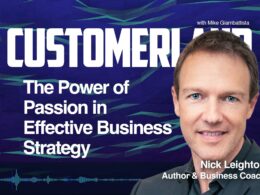It’s not necessary to see every pigment in the berry, only to notice whether it continues or interrupts my established pattern of safe-to-eat berries.
“Zig when everyone else zags” is a saying often applied to marketing. It also perfectly captures the simplicity of the brain’s attention system.
The impetus for paying attention to something comes from one of two places: inside of us, or outside of us. Neuroscientists call these endogenous and exogenous, respectively. Marketers must know how to work with these two forms of attention.
By Matt Johnson, PhD and Prince Ghuman
Endogenous attention is what you use when you shop with a grocery list in hand. Your guiding goal is to find the items on the list. In this case, what you pay attention to is directed internally (the endo in endogenous means “coming from within”). This is endogenous attention.
Now imagine you’re going the mall to kill time and browse around. In this case, you don’t have an internal goal. Instead, the things you pay attention to are generally directed externally (exo in exogenous means ‘coming from outside’), by whatever catches your eye. This is exogenous attention; the primary form of attention marketers must optimize.
Advertising, branding and content meant to grab attention work best when optimized for exogenous attention. Driving exogenous attention comes down to tapping into what the brain naturally pays attention to: change.
The brain’s emphasis on change makes evolutionary sense. Survival does not depend on taking in and experiencing one hundred percent of our environment. In fact, paying attention to every single detail all the time would actually hurt our survival odds.
Instead, survival depends on quick action, and our brains have evolved to process just enough perceptual information in order to act. Is this berry a fruit I’ve eaten before, or something new and potentially poisonous? It’s not necessary to see every pigment in the berry, only to notice whether it continues or interrupts my established pattern of safe-to-eat berries.

Learning patterns helps save time and energy. Conversely, breaking these patterns results in earning attention. Fast forward to today’s berry-free consumer environment, this ‘breaking of the pattern’ tactic plays on the brain’s exogenous attention to literally grab a consumer’s mind share.
At the visual domain, the brain is biased to pay extra attention to high-contrast objects—white against black, yellow against red, and so forth. Lines and contours can create high contrast as well. In fact, there are distinct systems in the brain that prioritize high-contrast information.
Studies with children as young as just a few days have demonstrated a consistent preference for high-contrast stimuli. And adult eye-tracking work has found that high-contrast areas can predict where people will look with eighty-five percent accuracy.
User experience designers know the brain’s attraction to contrast very well and incorporate it intelligently. The option most likely (or at times, most preferred by the designer) uses contrast to draw attention. Think of SAVE buttons in documents, cancel in log out screens, or sign up on homepages.
Sharp marketers have internalized this over time. Jamie Mustard, the author of the book, The Iconist: The Art and Science of Standing Out, knows this intuitively. When asked about attention, he succinctly describes exogenous attention in different words. “There is a magnetic power at play in a road sign or a warning label. The innate laws behind their design explain how anyone can demand irrefutable attention, at will, for any offering in business, art or science.”
To summarize, outside of our awareness, brains are constantly learning the patterns in the environment. Over a lifetime, brains internalize many such patterns, and these patterns provide the background, the zags if you may, of the consumer world. Breaking this pattern results in earned attention.
In other words, zig when everyone zags.
Matt Johnson, PhD and Prince Ghuman are founders of “PopNeuro – a Neuromarketing Blog for the masses” and co-author of “Blindsight – The (mostly) hidden ways marketing reshapes our brains”. You can check out more of their writing here.
This article originally appeared in PopNeuro. Photo by MagicPattern on Unsplash. Photo by Pankaj Patel on Unsplash.














1 comment